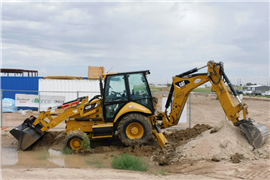How to recruit senior managers
30 January 2019
One of the perennial questions in most industries is whether or not to look outside for management and leadership talent, or to seek to fish from the best of the existing pool.

Having tried both approaches, seen both approaches and been both approaches (!) on numerous occasions, let me share with you a few thoughts on the advantages and pitfalls of the two options.
External recruitment
Businesses tend to look outside the industry when they sense that the contribution level to be found amongst people within a particular discipline inside is not where it needs to be to deliver the next stage in the company’s journey.
This might be (for example) because the industry has grown experts in sales within a very informal, relationship-dependent structure, which is now starting to creak as the industry expands.
A business might legitimately feel that someone who’s had experience of running a more system-driven, data informed, sales organisation is going to be helpful in leading the organisation through its next stage of growth. The same could well be true in operations, engineering or marketing.
The challenge here is that external recruitment into positions that demand a certain expertise in the industry (and you do need to understand the industry to be effective in leadership roles) needs to deliver someone who is a very quick learner and has the necessary people skills to garner respect from established colleagues.
The new person will arrive knowing (hopefully) a lot about their technical discipline, but nothing about the new industry.
They also need to chart a course to transfer their technical knowledge into the new organisation (which is why they’ve been hired), without completely alienating their new colleagues. How do you bridge the gap?
The best new hires into an industry fit the profile of being technically strong, but also sufficiently humble to accept that there is much that they don’t know.
Ideally, they spend their first few weeks just listening and evaluating and then, after about three months, match what they already knew with what they have since learned and start to engage their team in proposed improvements in ways of working.
Why? Because that way they have already modelled to their new team that it’s good to show humility, vulnerability and an appetite to learn through their own behaviour.
They then have moral authority for engaging their team with the technical changes they wish to bring about and, consequently, the likelihood of success rises sharply.
The opposite course is rarely, if ever, successful.
If someone arrives from another industry, takes no time to actively learn about the nuances and behaviours of their new industry and immediately goes into lecture mode, then they will create an alienated and unreceptive environment.
They will normally be gone within a matter of months and will have caused significant morale damage along the way.
Internal recruitment: advantages and disadvantages
Hiring someone from within the industry brings a corresponding mix of advantages and risks.
Assuming the individual comes from a company at a similar stage of development, it is unlikely that they will bring a number of stimulating new approaches with them.
However, they should bring a clear understanding of how the industry works, what customers think and how to collaborate with their colleagues. I say they should bring these things very advisedly.
The biggest single denominator in someone’s success is, generally speaking, not what they know, but how well they are able to deploy that within the culture of the organisation.
We all know that there are companies with widely differing cultures across the rental industry and if someone comes infused with the smell of culture ‘A’ into a company that is strongly culture ‘C’ then they will again struggle to fit in and be successful.
Internal and external recruitment: risks and opportunities
If I had to summarise my own experience in this area it would be something like this…
Hiring someone from outside of the industry is higher risk and places a premium on really ensuring they have the right kind of character to fit into the organisation.
However, the biggest positive changes I’ve seen in organisations have generally been wrought by someone coming from outside the industry, who adapts to it really well, and is smart enough to tailor their existing knowledge to bring real step-change benefits to the organisation.
Along the way they can change and inspire people who might have seemed stale beforehand.
Getting the wrong external hire (the person who arrives equipped with a loud-hailer and ear-defenders) or who is simply just not terribly technically strong, ends up doing real damage to the receiving organisation.
Conversely, hiring someone from inside the industry is less likely to result in an outright disaster.
At the same time, you are likely to get ‘more of the same’ and so, if you are looking to effect a step change improvement in performance, then it is likely to disappoint.
Whereas, if you are just looking for incremental gains, then this is probably the safest way to go.
Over to you.

About the author Kevin Appleton is an experienced senior executive and advisor in the equipment rental, logistics and construction service industries. He is a former CEO of Lavendon Group and a chairman and/or non-executive director of a number of companies in the rental and logistics sectors. To comment on these articles, e-mail: [email protected] |
STAY CONNECTED



Receive the information you need when you need it through our world-leading magazines, newsletters and daily briefings.
CONNECT WITH THE TEAM











